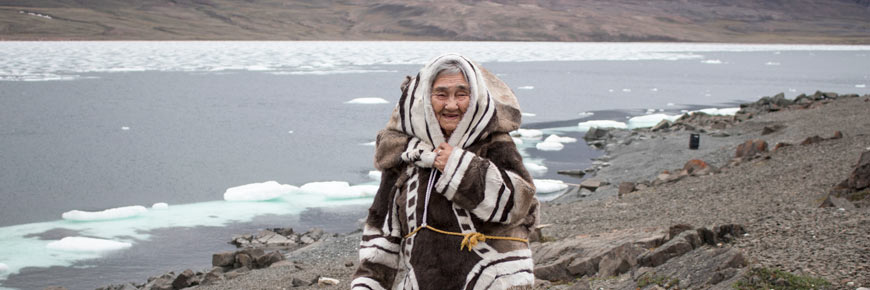
Hometown Heroes: Qapik Attagutsiak
Sirmilik National Park
Canada’s participation in the First World War (1914-1918) and the Second World War (1939-1945) touched every community in this country. Parks Canada invites Canadians to join us in commemorating individuals from all walks of life who made unique contributions to the war effort. During these global conflicts, civilians and those in the armed forces played a crucial role in protecting and building their communities and thus Canada as a whole.
From coast to coast, thousands of Canadians supported the war effort. We invite you to learn more about these local Hometown Heroes.
Get to know their remarkable stories, honour their memory and express your gratitude for their service by visiting Parks Canada’s National Historic Sites, National Parks, and National Marine Conservation Areas.
Nunavut Inuit and the Second World War effort
Millions of Canadians contributed to Canada’s fight for victory during the Second World War (1939-1945). On the home front, men, women and children were encouraged to participate in domestic salvage operations to collect recyclable materials for the war effort. Bones were one of these resources, used to make ammunition, aircraft glue and fertilizer. A source of bones was from the Eastern Arctic.
Born in 1920 and living near Igloolik (Qikiqtaaluk region of Nunavut) at the time of the war, revered leader and Inuk Elder Qapik Attagutsiak recalls this episode of her life: “We heard about those in the world war. […] We were afraid that our husbands would be killed if they encountered [the enemy] who may jump from an airplane.”
A French missionary living in Igloolik among the Inuit at that time, asked her community to collect bones, particularly of their dying dogs which had fallen ill. “We were informed,” remarked Qapik, “that we must collect the bones as the army wants us Inuit to make something for smoke.” She noted adult members of her camp, including herself, together with other Eastern Arctic communities, gathered walrus, seal, dog and other mammal bones, filling large sacks, then shipped to southern Canada for processing.
Related links
- Date modified :